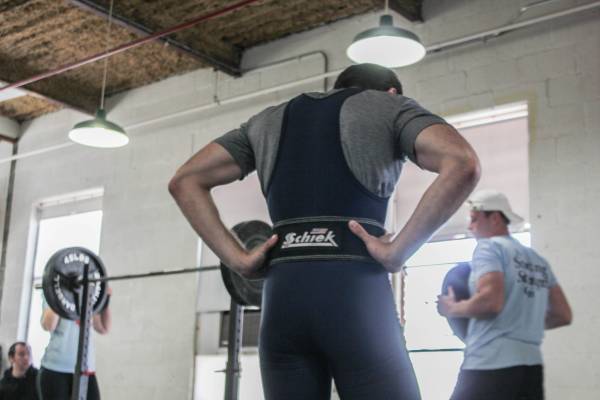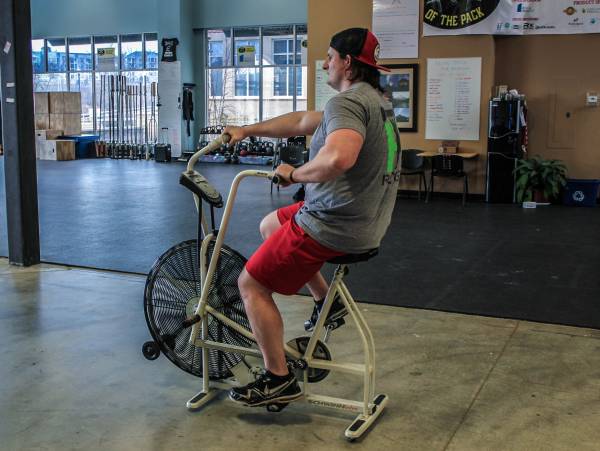We’ve all seen the people who go to the gym, hop on the elliptical for 45 minutes, never change their routine, and never change their appearance. These average gym-goers are an example of steady-state cardio gone wrong. If all you do is pump your legs on an elliptical machine and never take care of your diet, then no, you probably won’t ever see changes in your physique.
We’ve all seen the people who go to the gym, hop on the elliptical for 45 minutes, never change their routine, and never change their appearance. These average gym-goers are an example of steady-state cardio gone wrong. If all you do is pump your legs on an elliptical machine and never take care of your diet, then no, you probably won’t ever see changes in your physique.
On top of that, steady state cardio has been sold to the lifting community as a surefire way to destroy all your hard-earned gains, get fat, and get hurt.
But here is the truth: steady-state cardio offer some serious advantages for lifters. If you start incorporating it into your routine, you will almost always see improved performance in the weight room.
Don’t be led astray by the hype – running can actually lead to your best strength gains.
Training the Energy Systems
To understand the value of steady-state cardio for lifters, we first need to understand what fuels our body.
ATP is the currency our muscles use to pay for the work we do. ATP is the most basic form of energy, and without it we’d be downright screwed.
“Aerobic training is easily incorporated into a program because it’s nature makes it low intensity and easy to recover from.”
We have three main energy systems we rely on to produce ATP:
- ATP-PCr system: This system kicks ass, but can only do so for six to ten seconds at a time. It’s the fastest at producing energy, but requires more time to recover.
- Glycolytic: This system is the intermediate one. It can hit hard and fast like the ATP-PCr system, but can’t sustain that for more than about 120 seconds of true work.
- Aerobic: This bad boy is awesome when it gets going. It takes longer to get up and running, but it’s incredibly efficient, and you can count on it for hours at a time.
High intensity forms of cardio such as sprints, sled pushing, and other HIIT-type training work the ATP-PCr and glycolytic energy systems.
This form of exercise is quick, dirty, and straight to the point. You burn through a ton of ATP and glycogen in a short amount of time, and you need longer to recover.
Aerobic cardio, on the other hand, can seemingly go on forever. Once you’re in the aerobic system, you can crank out ATP for hours on end thanks its superior ATP production.
Why Go Aerobic?
Every single athlete or recreational lifter has hit the point of feeling completely gassed.
It’s perfectly normal to get to that point, especially if you’ve been hitting it hard for an extended period of time. But when that happens, are you done or are you able to recover and keep going?

Competitive powerlifting is a physically taxing sport that requires large periods of recovery.
A well-developed aerobic system makes for a better-conditioned athlete for two reasons:
- It is superior at cranking out ATP, which makes it excellent at fueling long bouts of exercise.
- It is superior at clearing metabolites and waste products.
Basically, the better an athlete is at clearing waste and utilizing energy, the longer the athlete will be able to perform at a high level. Aerobic exercise is necessary to making this happen.
Develop a More Powerful Heart
Another major adaptation that takes place with consistent aerobic exercise is within the heart, specifically the left ventricle.
Essentially, the left ventricle grows. To be specific, the heart wall of the left ventricle expands. This means that with each heartbeat, the heart can pump out more blood since the left ventricle can fill with more blood.
“[W]hen done correctly, aerobic training won’t be responsible for destroying your gains in the weight room. In fact, it might be just what you need to move beyond progress plateaus.”
This is a major benefit during exercise because increased blood flow means increased nutrient and oxygen delivery to the muscles.
This also means a lower resting heart rate during periods of no exercise. If your heart can deliver more blood with less work, your performance and recovery will benefit. When it comes to serious lifting, the quality of our recovery can have big implications on our results.
Improved Body Composition
This is an obvious point, but one that must be stated. In terms of physique development, the combination of resistance training and aerobic training is unmatched.
This is likely due to the fact that resistance training increases metabolic rate, while aerobic training decreases hunger levels. Improved body composition also leads to increased leptin and insulin sensitivity, as well as increased testosterone and lower estrogen levels.

Improved body composition for strength athletes is a side benefit of aerobic training.
For an expert opinion on this topic, I went to Alex Viada, CSCS. Alex is the author of The Hybrid Athlete, and founder and co-owner of Complete Human Performance, a company that specializes in building athletes who possess exception levels of strength and unmatched endurance.
Alex isn’t only brains, though. He practices what he preaches – he is a marathon runner and triathlete who also boasts a 700lb squat.
The thought that “cardiovascular conditioning” only benefits endurance activities is fundamentally wrong – a stronger heart and superior circulation result in more oxygen and nutrients provided to working muscles regardless of the type of training being done. A better conditioned strength athlete will clear metabolites faster (including lactate after higher repetition sets), make better use of existing glycogen to fuel their training (more mitochondria in their muscles), and maintain better energy levels and improve recovery times between sets, which means training sessions can include more productive, high quality work in the same amount of time.1
How to Incorporate Aerobic Training Into Your Program
Aerobic training is easily incorporated into a program because it’s nature makes it low intensity and easy to recover from. It also doesn’t take hours and hours of training time to start seeing aerobic adaptations.
When incorporating aerobic training, here are a few guidelines to keep in mind:
- Always stay within the aerobic range. Obvious, right? For some lifters, going high intensity is natural, and they have to work to dial it back. Don’t let your heart rate get above 85% of your max and work to stay within a 60-85% range.
- Less is more. You don’t need to spend hours pounding the pavement to get the necessary aerobic adaptions. Three or four thirty-minute sessions per week are plenty to get the job done.
- Get cardio in on your off days or as far away from strength training as possible. If hypertrophy is your main goal, it’s wise to perform cardio on non-lifting days in order to spare as much muscle tissue as possible. If you absolutely must perform cardio on lifting days, look to keep the two sessions as far apart as possible. If you lift in the mornings, perform cardio in the evenings or vice versa.

There are several ways to incorporate aerobic exercise alongside your strength routine.
Add Cardio to Your Routine for New Gains
One of the most long-standing arguments in the lifting world against aerobic training is that it wastes away muscle tissue. Lifters who have put in hours of work are worried they’ll see their hard fought gains disappear.
This is a fair concern, and one that does seem to be reality. If losing hard fought muscle mass is a concern, forms of aerobic work like cycling, swimming, rowing, or even time on the elliptical are perfect options for you.
The higher impact the cardio, the more muscle loss that’s likely to occur.
But when done correctly, aerobic training won’t be responsible for destroying your gains in the weight room.
In fact, it might be just what you need to move beyond progress plateaus.
Check out these related articles:
- Alpha-Male Style Cardio Training
- The Elliptical for Cardio? Smart Strength With Charles Staley
- How Do I Get Better Cardio Without Losing Strength?
References:
1. Alex Viada, email message to author, (June 13, 2015)
Photos 1 and 3 courtesy of Shutterstock.
Photos 2 and 4 courtesy of Pulse Beat Fit.






